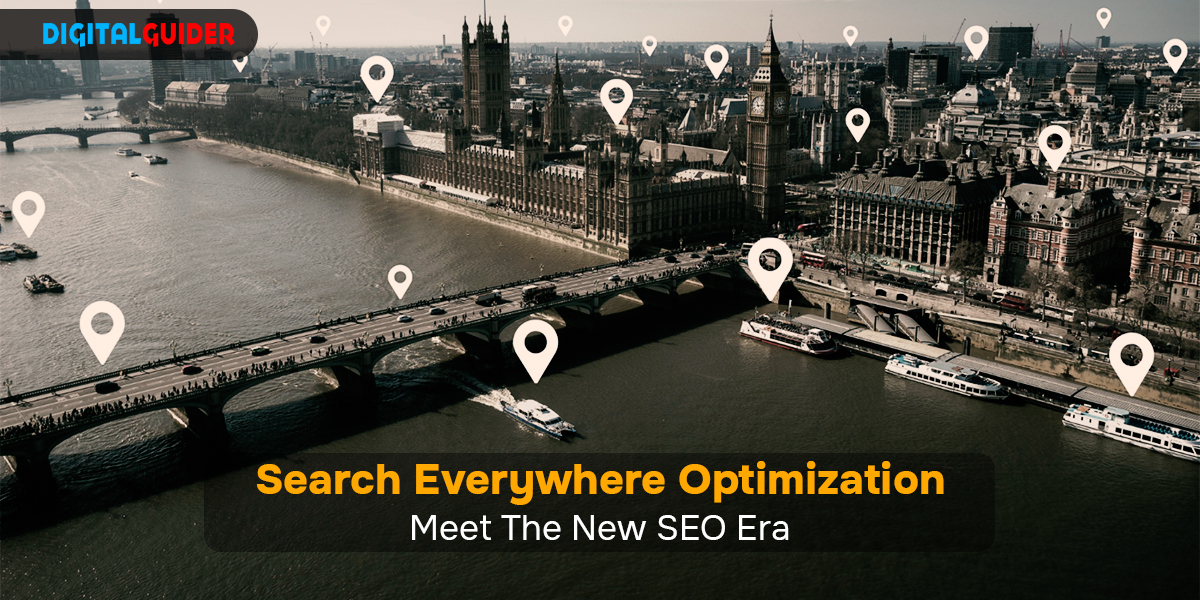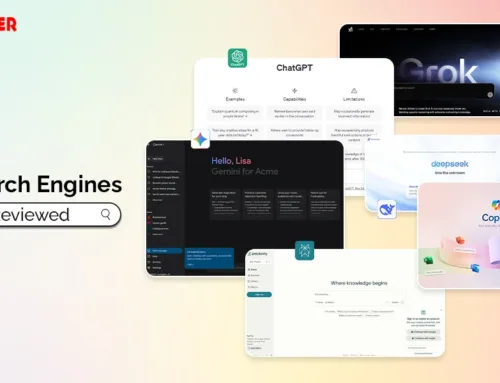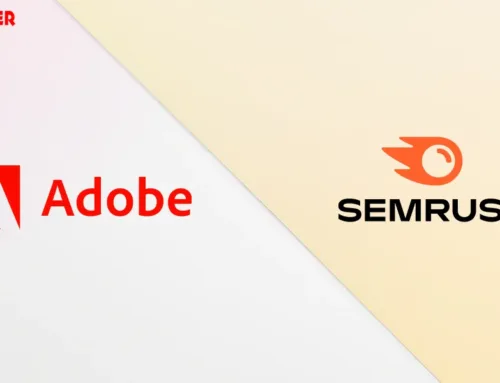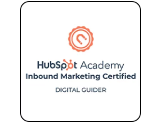What is the new era “SEO”?
It’s “search everywhere optimization”, which means as organic search strategists, we should take more ownership to optimize beyond Google.
Well, SEO results always evolve; therefore, only search “engine” optimization isn’t enough anymore. Brands need to take action and treat optimization search as a full-spectrum strategy, also optimizing their organic presence across every platform.
Even Danny Sullivan, Google’s Search Liaison, recently mentioned that “One way to achieve success with Google Search is to consider perspectives beyond it.”
But yes, there will be a matter to argue that this isn’t a new concept, and they’re right. But why is it called “new” SEO?
However, this optimization strategy is a must, rather than taking it for granted.
In this article, we’ll walk you through all about search everywhere optimization, including why it’s so important, where to focus your efforts, and how to optimize your presence across the most important channels.
Ready to go all in on the new SEO? Let’s begin.
What is Search Everywhere Optimization? (Why does it matter?)
Search Everywhere Optimization, also referred to as search optimizing or search optimization in various contexts, takes advantage of the fragmented character of search, increasing organic visibility across as many different platforms as possible. Since people search for answers not only on SERP but on several channels, the new SEO helps them to find you.
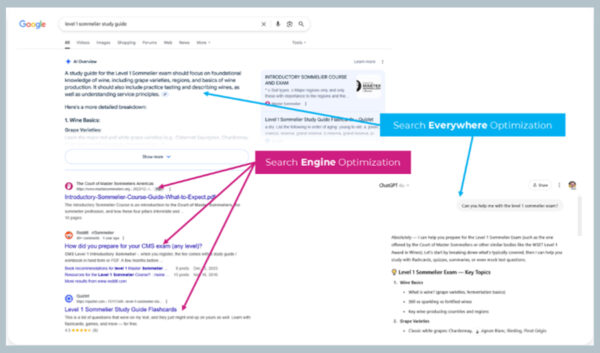
Source: Sparktoro
Let’s see why Search Everywhere matters-
- It increases reach and awareness as different audiences search on different channels, and search everywhere optimization helps your brand target the users on the platforms where they’re more active.
- Gets higher engagement, as every platform offers unique engagement options (such as likes, comments, and shares) that can enhance customer relationships and foster loyalty.
- Improves conversion by maintaining consistent brand visibility across channels, which ultimately builds trust and influences conversion.
But the real question arises:
Is search everywhere optimization a fad, or is it a real shift?
Well, obviously, it’s a very natural question, search everywhere optimization, as ultimately voice search optimization has been labeled as the next significant trend for numerous years.
However, the data points in a different direction for search everywhere optimization:
|
As search behavior is changing, online businesses need to expand their optimization efforts across all channels, from social media networks to search engines to review sites.
Why Search Behavior Has Shifted?
Search today isn’t just about typing a query into Google and clicking the top result. People are breaking away from traditional search engines and exploring new platforms that feel more relevant, more private, and more personalized.
From generative AI tools like ChatGPT to voice assistants, social platforms, and privacy-focused browsers, search is no longer centralized. It’s now fragmented and happening everywhere.
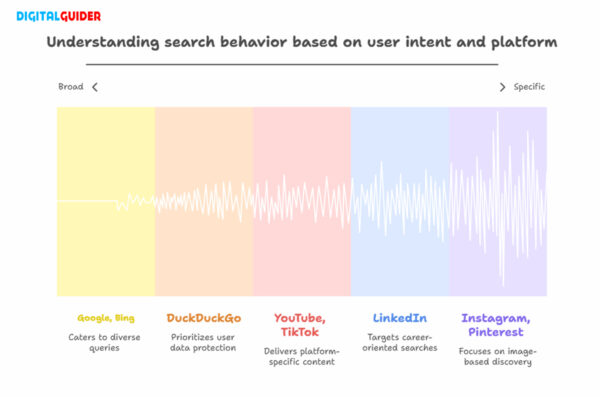
This shift is creating both a challenge and an opportunity for brands that want to stay discoverable in today’s evolving landscape.
What does Search Everywhere Optimization cover?
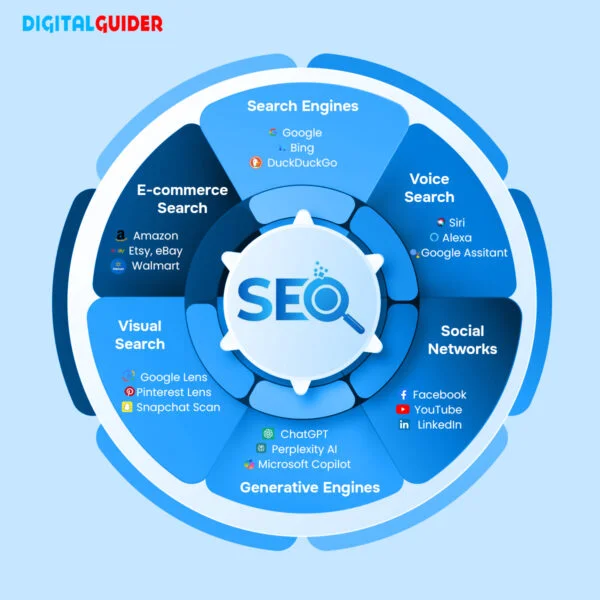
Where to Focus Your Search Everywhere Optimization?
Since you’re well aware of what and why of search everywhere optimization. Now let’s take a look at where.
Below is the breakdown of the op channels you should optimize, grouped into five key categories:
- Traditional search
- Social media
- Artificial intelligence (AI)
- Shopping platforms
- Emerging underdog channels
1. Traditional Search
The vital role in your Search Everywhere Optimization strategy will always be the traditional search engine. But yes, as per SparkToto, Google remains the global search champion, referring to almost two-thirds of all web traffic.
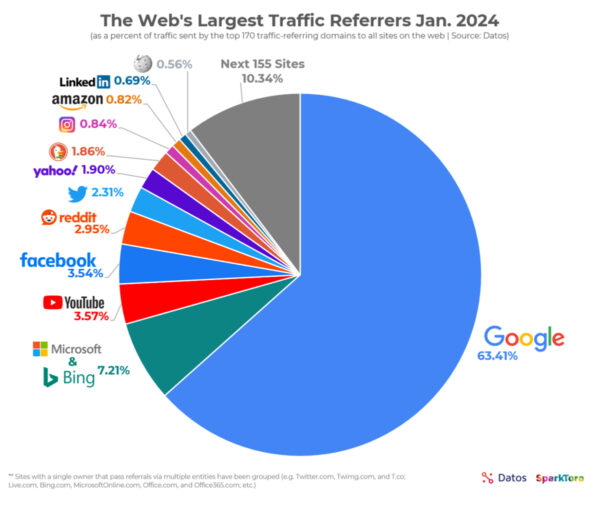
Source: Sparktoro
This means there’s always a need for traditional SEO on the following platforms:
Google and Bing
Google remains an undisputed leader in the search engine space, commanding a massive 91% market share. However, don’t dismiss Bing just yet; despite holding a 3.4% market share, it can still drive meaningful traffic to your site, especially in certain demographics and industries.
Well, you can improve your visibility by implementing time-tested tactics such as:
- Creating high-quality backlinks
- Cleaning up your technical SEO
- Publishing great content consistently
And don’t forget AI Overview, a search engine result page (SERP) new feature, which often highlights clear, concise, and authoritative answers to user queries.
So, how do you get the chance to be featured in those eye-catching SERP spots like AI Overviews or featured snippets?
Well, all you need to do is infuse your content with real expertise, add experts’ quotes, back up your points with authoritative insights, and always aim to demonstrate E-E-A-T (experience, expertise, authoriveness, and trustworthiness)
YouTube
Don’t forget—YouTube isn’t just a video platform, it’s the second-largest search engine in the world. If you’re creating video content, optimizing for YouTube is a must.
Start with basics by using keyword-rich titles, descriptions, and transcripts to improve visibility. Then go a step further by fulfilling search intent, identifying content gaps, and creating videos that directly answer the questions people are already asking.
For that, use search listening platforms like AnswerThePublic to research the questions consumers have about your topic.
Social Search
Social media platforms are now the second stop for many users, right after search engines.
In fact, the average user browses nearly seven different platforms each month. According to Google research, almost 40% of Gen Z users turn to platforms like TikTok and Instagram first when they’re looking for answers.
This growing shift is what makes social SEO so essential.
To improve your visibility across social platforms, focus on these core tactics:
- Use clean, logical handles and profile names
- Fully complete your profiles
- Optimize bios and captions with relevant keywords
- Insert high-quality visuals
- Lean into trending content formats and topics
2. AI Search
More and more people are using AI chatbots like ChatGPT and SearchGPT to get in-depth answers to their questions.
While these platforms don’t always drive direct traffic, their growing ability to reference external sources opens new doors for search optimizer strategies to increase brand mentions, trust, and relevance.
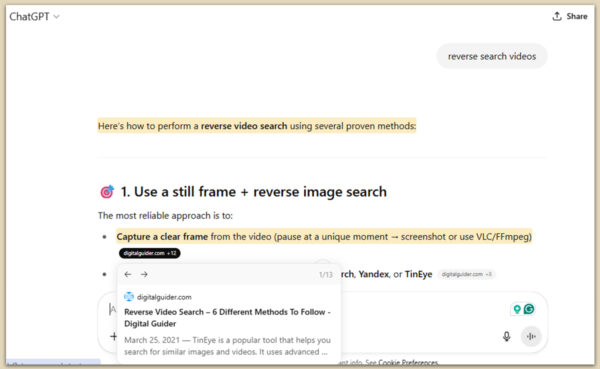
Source: ChatGPT
GEO (Generative Engine Optimization), also known as LLM optimization, is all about increasing the chances that AI chatbots mention your brand in their responses.
The goal? Position your brand as a trusted, go-to source whenever these platforms need credible information in your industry.
So, how can you do that?
- Build your brand’s authority by publishing high-quality content, featuring expert insights, and strengthening your online presence. Focus on boosting E-E-A-T signals.
- Create detailed, well-structured content using natural language keywords. Include an FAQ section in each article to answer real user questions directly.
- Refine your technical SEO by adding schema markup, fixing crawling issues, and ensuring Google can easily index your pages, making them more accessible to LLMs.
3. Underdog Channels
— Branded Podcasts
Podcasts are a much less saturated space than blogs, making it easier for your voice to stand out. To boost visibility, lean into podcast SEO, a growing opportunity to reach niche audiences.
Here’s how to get started:
- Created standout, high-quality content that provides real value.
- Answer common questions in your podcast titles and description using relevant keywords
- Engage with your audience. Respond to feedback and build a loyal community.
- Use digital PR to build authority and generate buzz across other platforms.
— Voice Search
With voice search growing rapidly, natural search optimization is now essential. The key is to understand how people speak their questions and how voice assistants like Siri and Alexa interpret and deliver answers.
To optimize for voice search, focus on:
- Using long-tail keywords and answering questions
- Writing in a conversational tone
- Adding structured data
- Boosting your site’s authority
— Forums
Consumers trust real opinions, so it’s no surprise that forums like Reddit and Quora have become go-to sources for knowing the best restaurants, trending products, and honest reviews.
In fact, Google data analyzed by Reddit shows that over 100 people add “Reddit” to their searches every second, a clear sign of how much users value peer-driven insights.
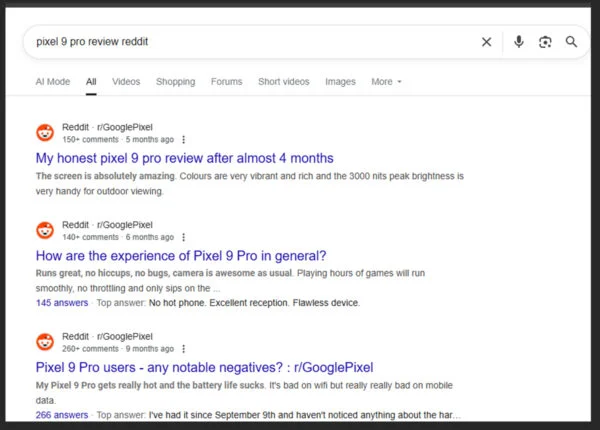
For brands, the key to success on these platforms is showing up authentically. Here’s how to do it right:
- Creating clearly branded accounts
- Provide honest, helpful answers and support
- Identify and participate in relevant subreddits
- Engage with timely topics and trends
4. Shopping Platforms
Google shopping is a great tool, but it’s not the only way people view products.
E-commerce platforms act as search engines, too, so if you’re selling products offline, you need to optimize for them as well.
Start with Google by using product schema to showcase your items, shipping info, and reviews.
Then, extend your optimization for platforms like Amazon and beyond
→ Amazon
Amazon is a major product search engine in the e-commerce world, and ranking high can make a big impact.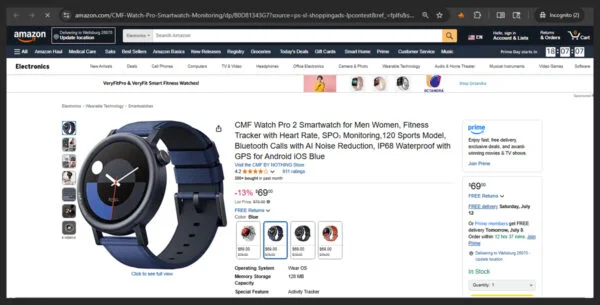
To optimize your listings:
- Use keyword-rich titles and detailed descriptions
- Focus on getting five-star reviews
- Invent on A+ content and high-quality visuals to boost conversions
→ App Stores
When people want an app, they go straight to the App Store or Google Play, not Google Search
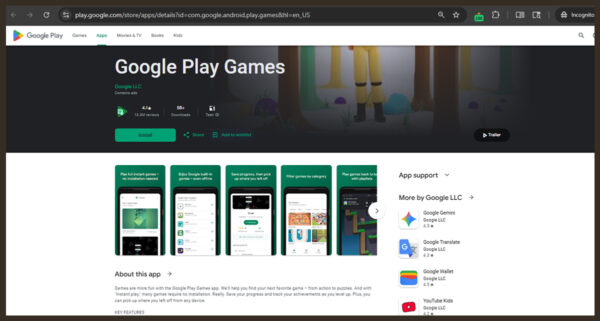
That’s why App Store Optimization(ASO) is key to increasing your app’s visibility by:
- Add keyword-rich titles and descriptions, and keep them updated
- Use high-quality screenshots and visuals
- List updated notes clearly and respond to feedback
- Monitor rating and reviews
How to Execute Search Everywhere Optimization as Your Strategy?
So, now you’re ready to get started with search everywhere optimization? Here are some initial steps to take to implement your first campaign:
- Get started by identifying the audience’s behavior. Google Analytics with customer surveys are two major ways to find out where they spend their maximum time online. Don’t just directly ask which platforms they use; instead, learn which podcasts they listen to, where they shop, and whom they follow.
- Make your content customized for each platform. Your content will resonate more if you write it according to the platforms. Know the platform-specific features and best practices, and also learn what works and what doesn’t.
- Utilize analytics to enhance performance. Optimize your content by using platform-specific analytics (such as TikTok insights) to assess what is effective and make adjustments accordingly.
- Optimize your presence for local and voice search. If you run a local business, make sure your details are correct on Google Maps and Yelp. Also, you should optimize your FAQ-style content for voice search.
- Maintain consistent branding. No matter which platform you optimize, it’s essential to keep your branding consistent. Which means using the same handle and profile name (when possible), brand visuals, messaging, and tone of voice.
Drawbacks and Roadblocks of Search Everywhere OptimizationOne of the major roadblocks in implementing search everywhere optimization effectively, especially in large organizations, is the siloed nature of the marketing team.
This quote reveals that SEO doesn’t thrive in isolation. Often, when the SEO team tries to collaborate, especially with the Social Media or Content team, it feels like they are overstepping. But in reality, SEO is not about control; it’s more about coordination. Here’s what that strategic SEO influence looks like:
Optimizing for search everywhere is effective only when SEO is incorporated as a cohesive strategy, not merely an afterthought. It’s time for SEO to guide, not just rank. |
TL;DR: SEO No Longer Starts at Google’s Front Door
Your audience doesn’t stick to one search bar.
They’re discovering, validating, and exploring across Google, AI tools, social platforms, marketplaces, and more.
That’s why Search Everywhere Optimization isn’t just a rebrand of SEO; it’s a shift in mindset.
Yes, traditional SEO still matters, but it must work alongside a multiplatform visibility strategy.
If you remember anything, let it be this:
- Stop chasing rankings, focus on being findable, valuable, and relevant everywhere.
- Define your brand clearly, build authority intentionally, and show up where your audience (and AI) pays attention
- Create content so useful and well-structured that AI can’t help but surface it.
Because today, SEO is no longer just about keywords, it’s about trust, visibility, and presence entire digital ecosystem. Start showing up where your audience actually searches by contacting us at +1-307-209-3608.
FAQs
Q1. Do I need a separate strategy for each platform?
A1. Yes, use a core content strategy, then adapt the format, tone, and keywords based on user searching on each platform.
Q2. How do I know which platforms my audience uses most?
A2. By using Google Analytics and audience surveys, you can get an idea of where they stop, which podcasts they follow, or which app they use daily.
Q3. What’s the fastest way to start implementing Search Everywhere Optimization?
A3. Start by auditing your current presence across platforms and fill in the visibility gaps where you’re missing or misaligned.
Q4. Can I measure ROI from Search Everywhere Optimization?
A4. Absolutely. Use platform-specific analytics to track engagement, visibility, and conversions from each source.
Q5. Does this approach work for local businesses, too?
A5. Yes, especially! Local optimization across Google Maps, review sites, voice assistants, and even Instagram location tags can boost local visibility.
Q6. How often should I update content for Search Everywhere Optimization?
A6. Refresh content quarterly, especially on high-visibility platforms, as trends shift fast and outdated content hurts visibility.
Q7. Should I optimize my content differently for AI tools?
A7. Yes, for AI tools, focus on clarity. Structure, a nd expertise. Use FAQ formats, expert quotes, and natural language that’s easy for LLMs to understand and reference.
Q8. Is keyword research still important in Search Everywhere Optimization?
A8. Absolutely, use platform-specific tools to find contextual search terms.
Q9. What’s a common mistake marketers make with this approach?
A9. Using the same content across platforms without adjusting for audience behavior. Remember: what works on Google won’t perform the same on Pinterest or Reddit.
Q10. How long does it take to see results from Search Everywhere Optimization?
A10. It depends on the platform, but you can start seeing early engagement within weeks, especially on social media, AI tools, and forums.
